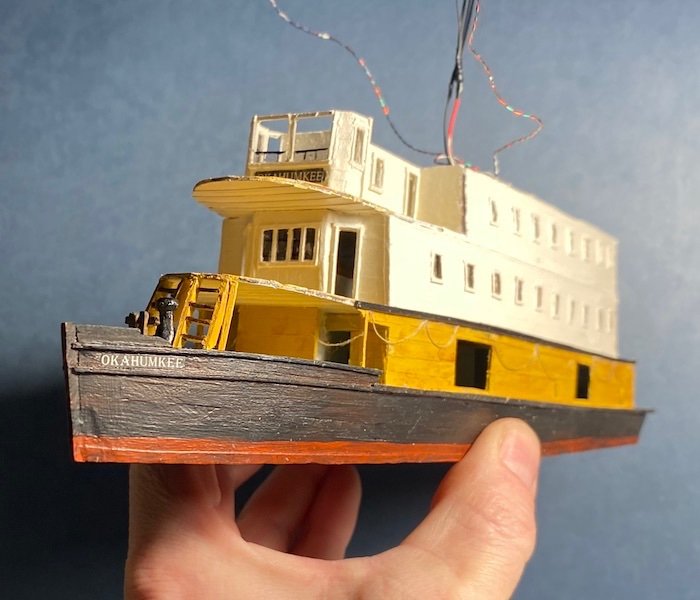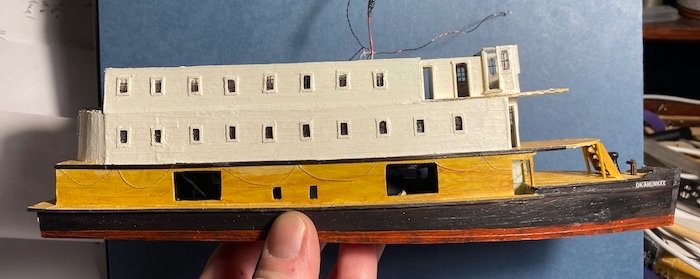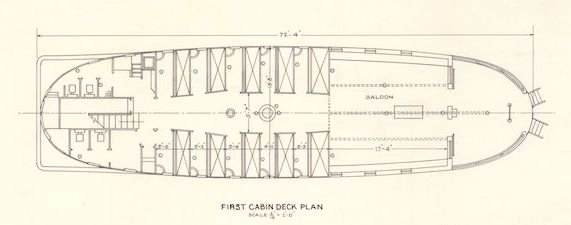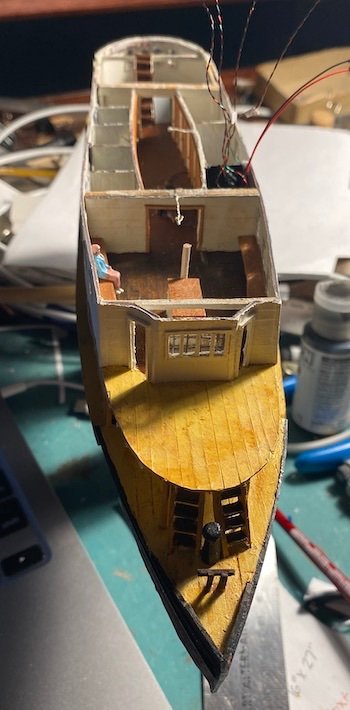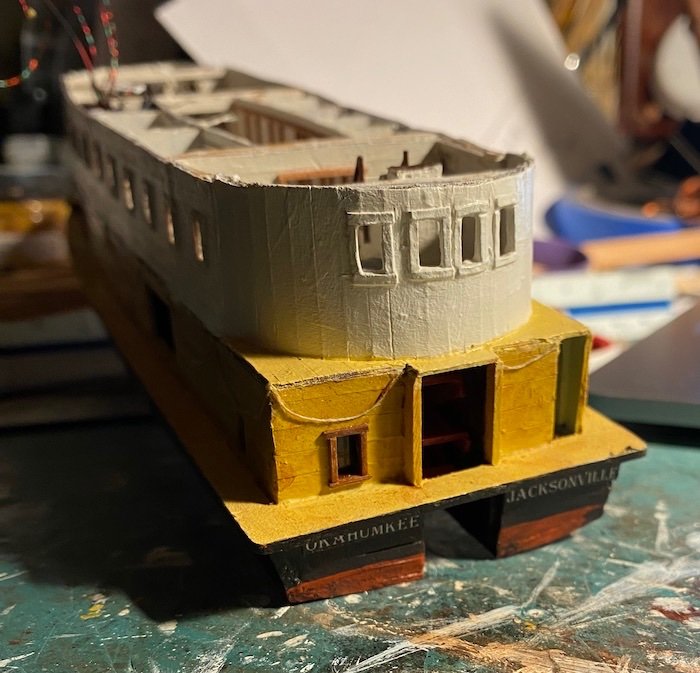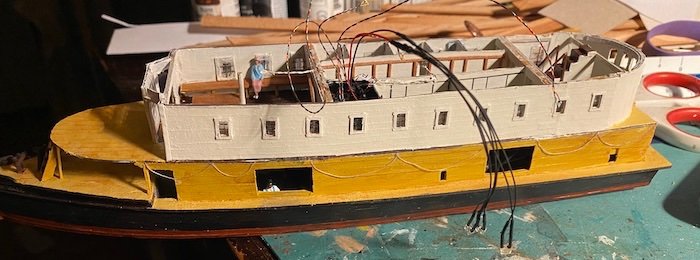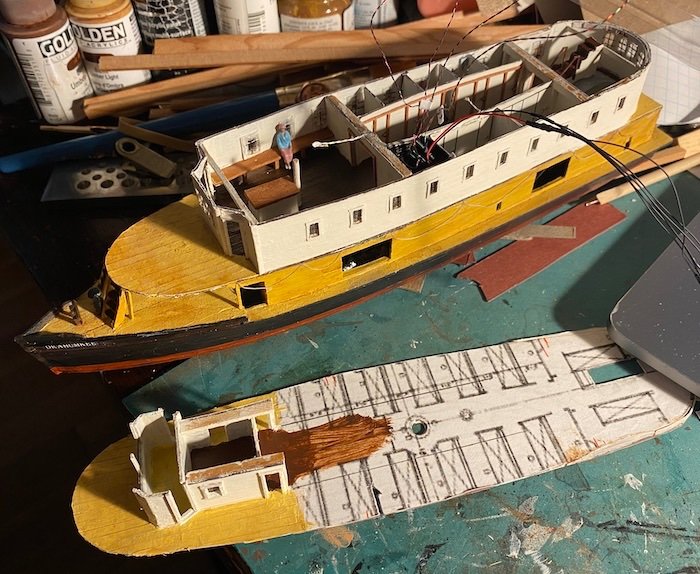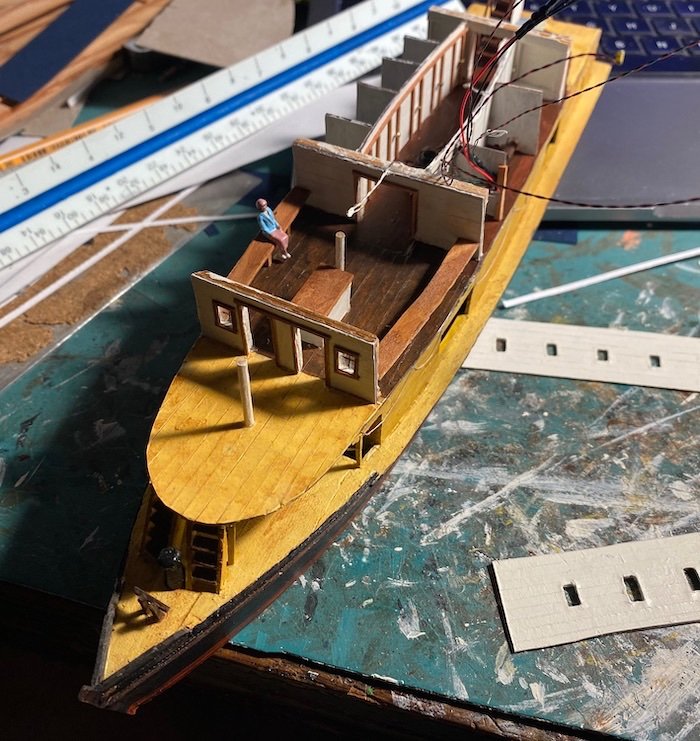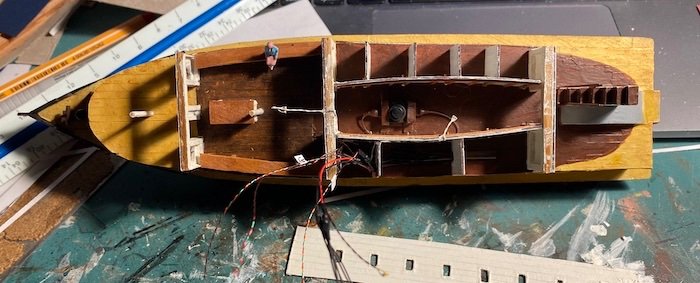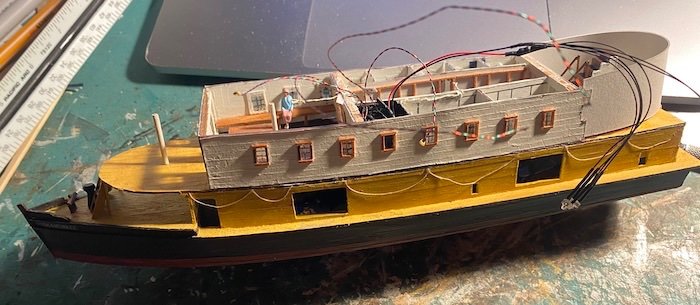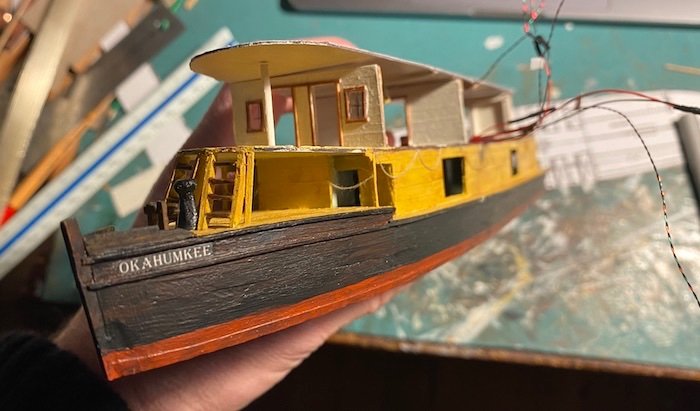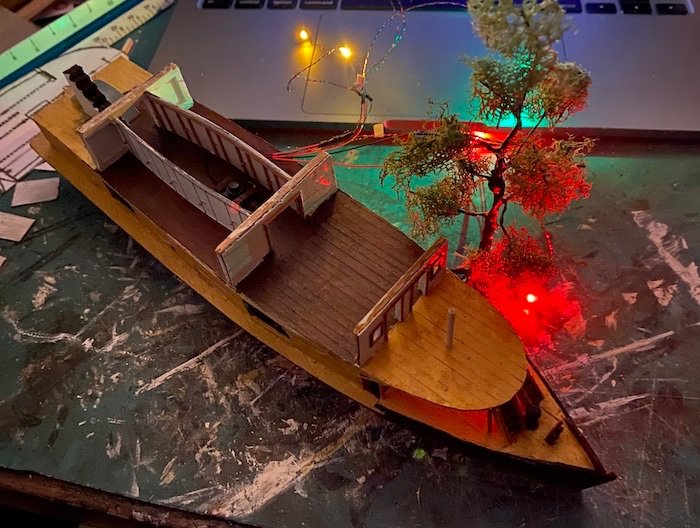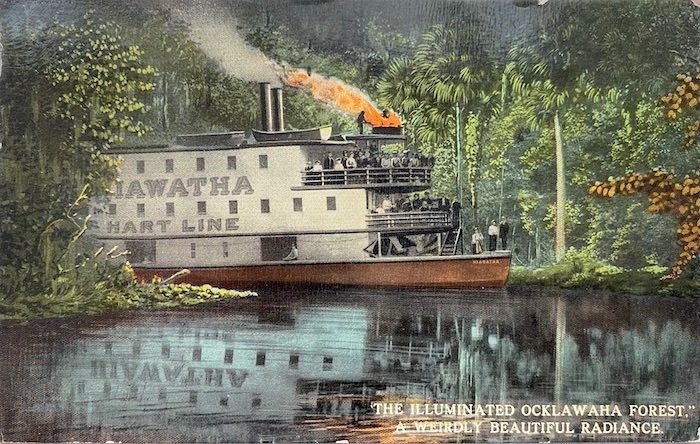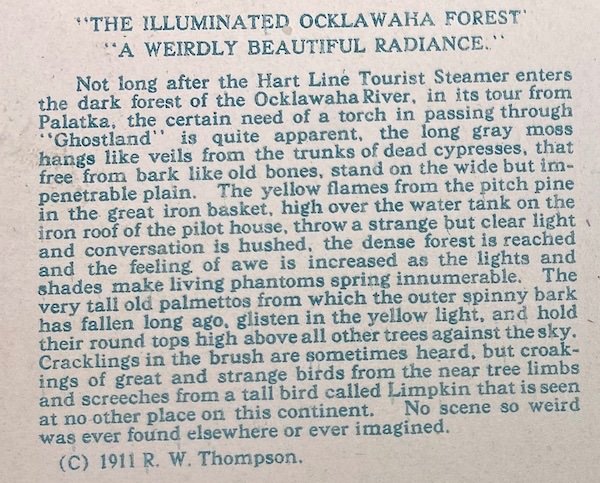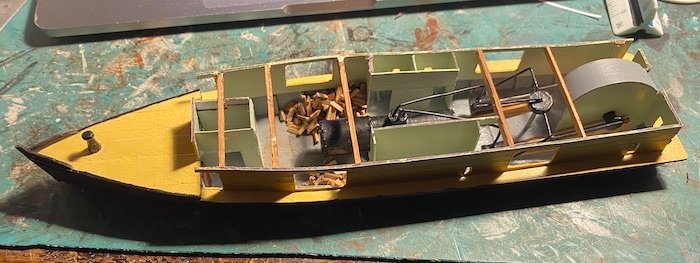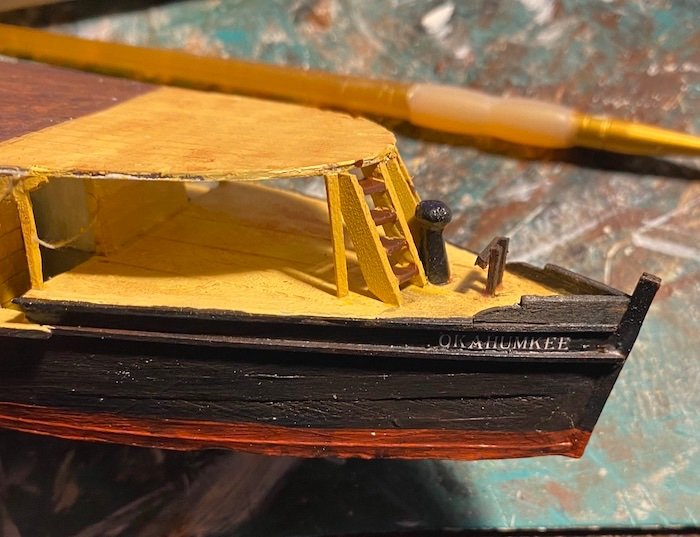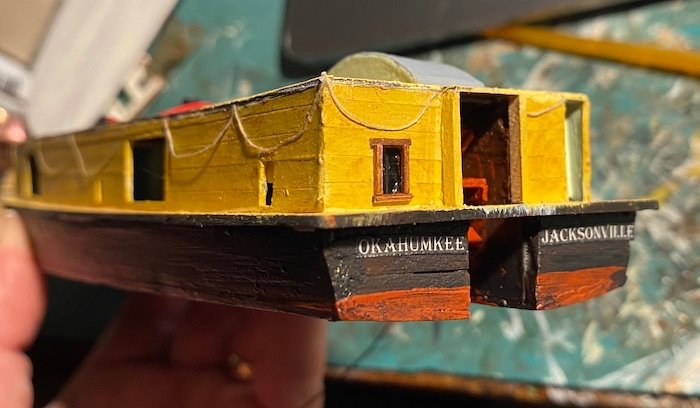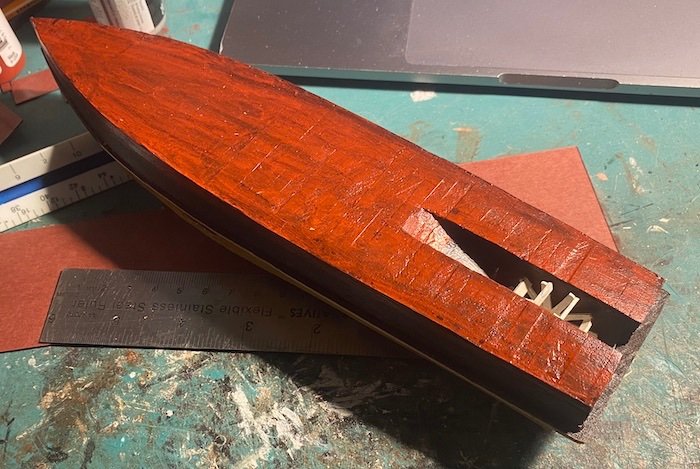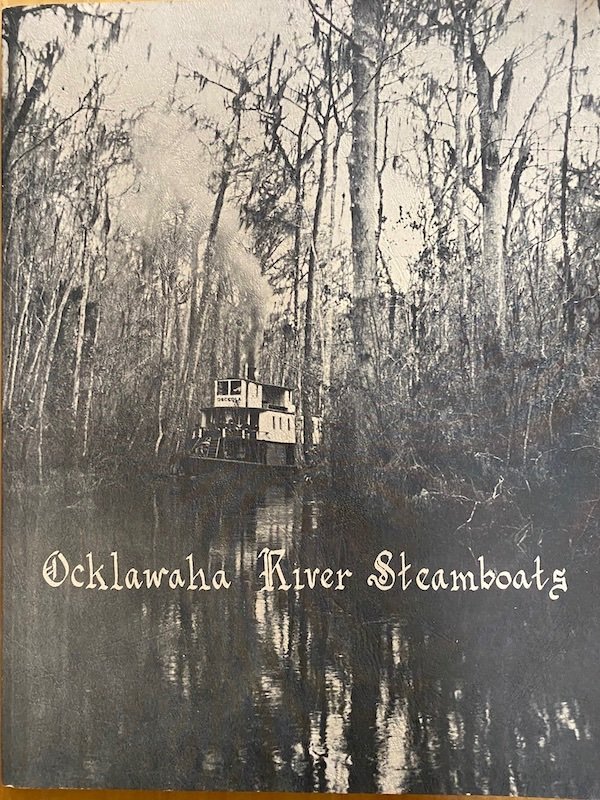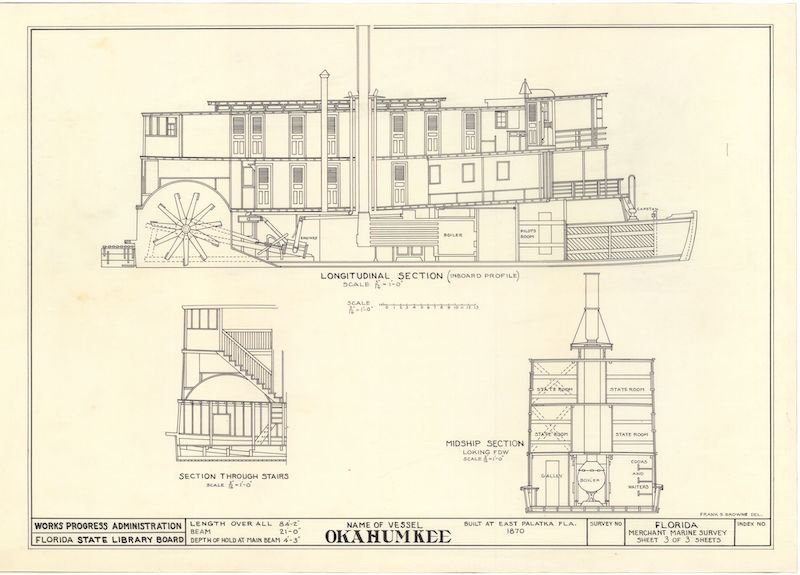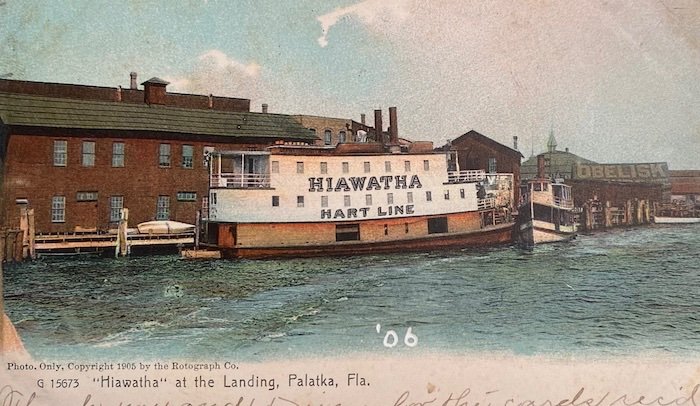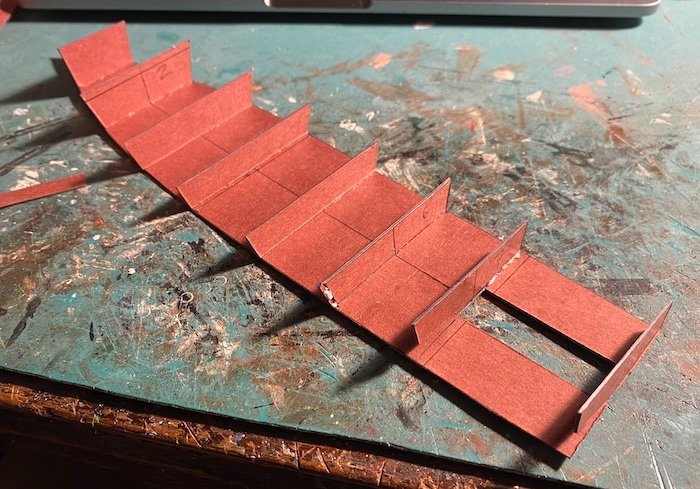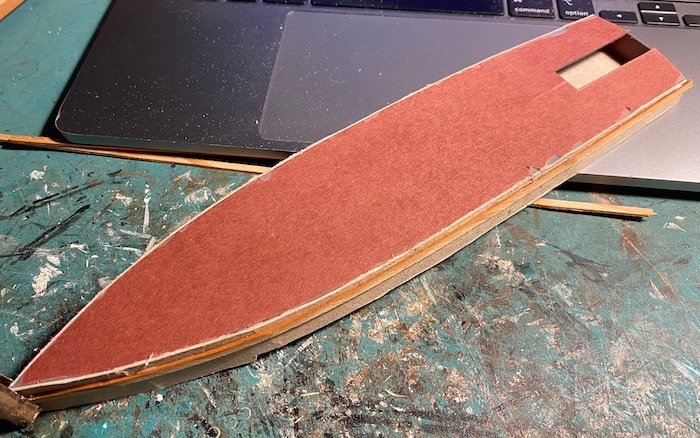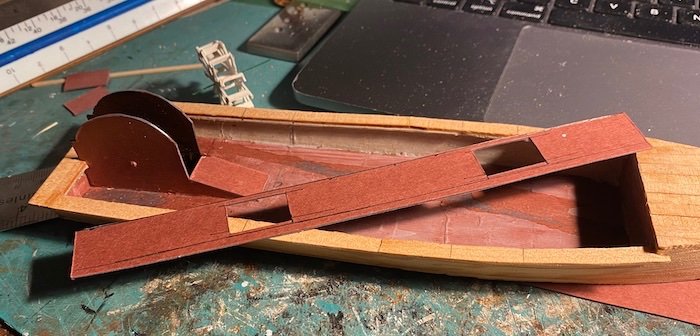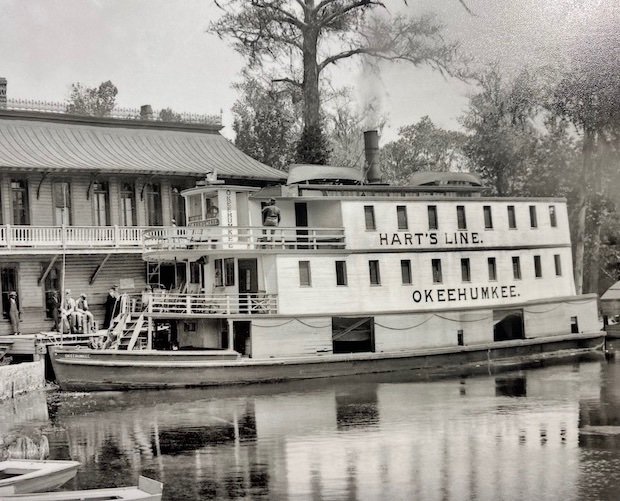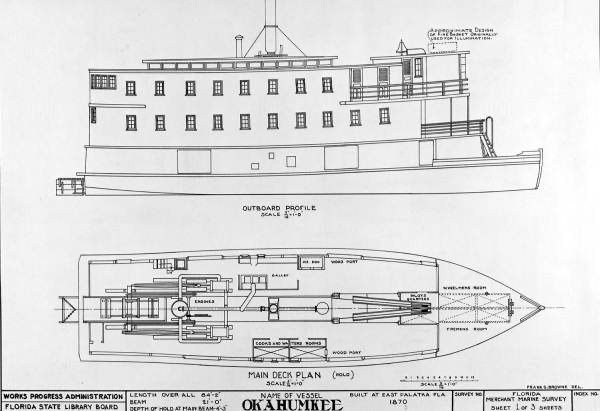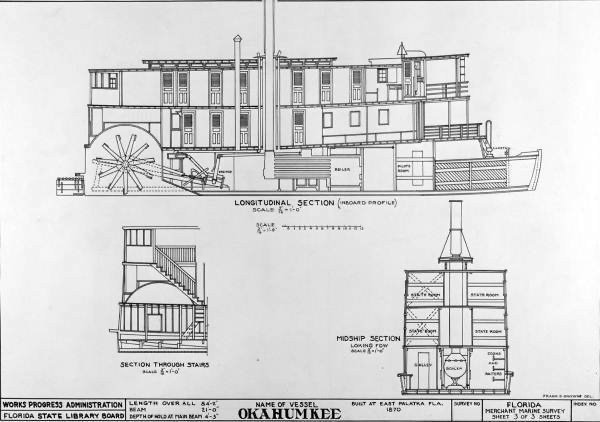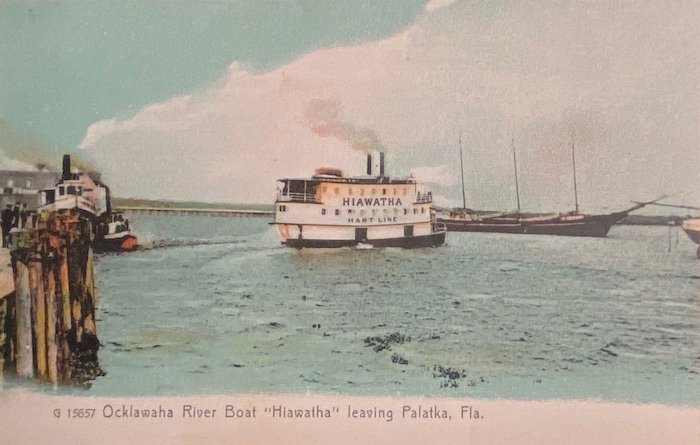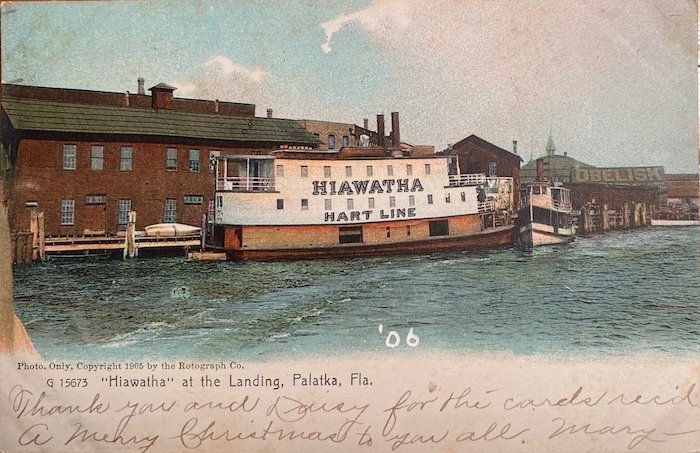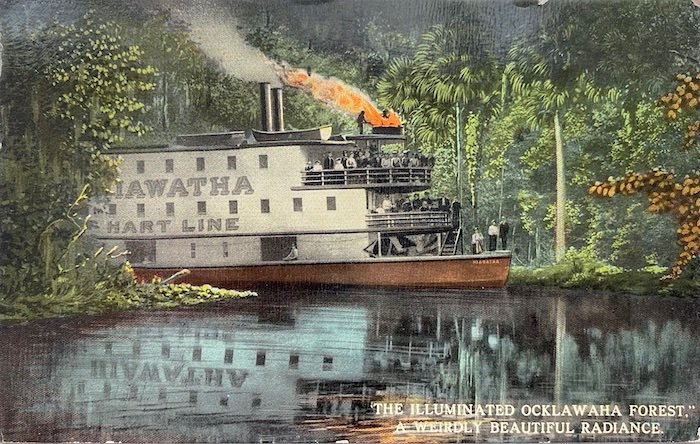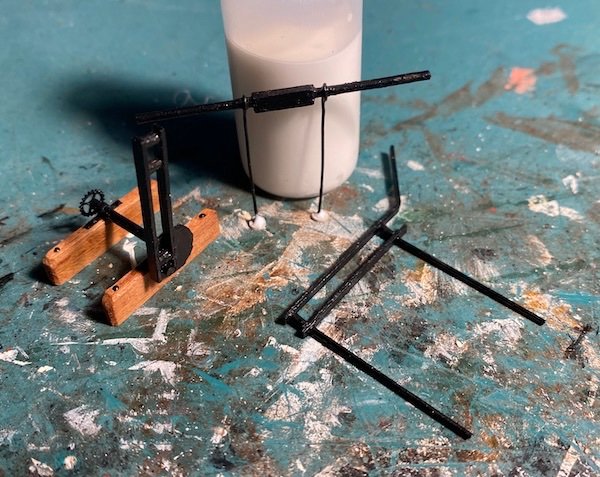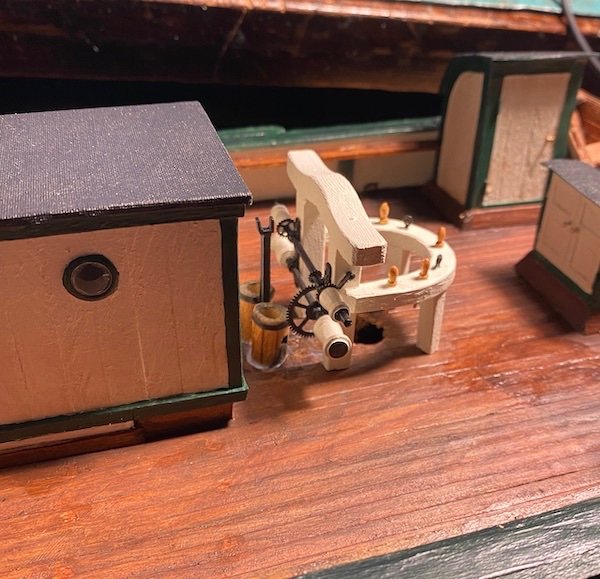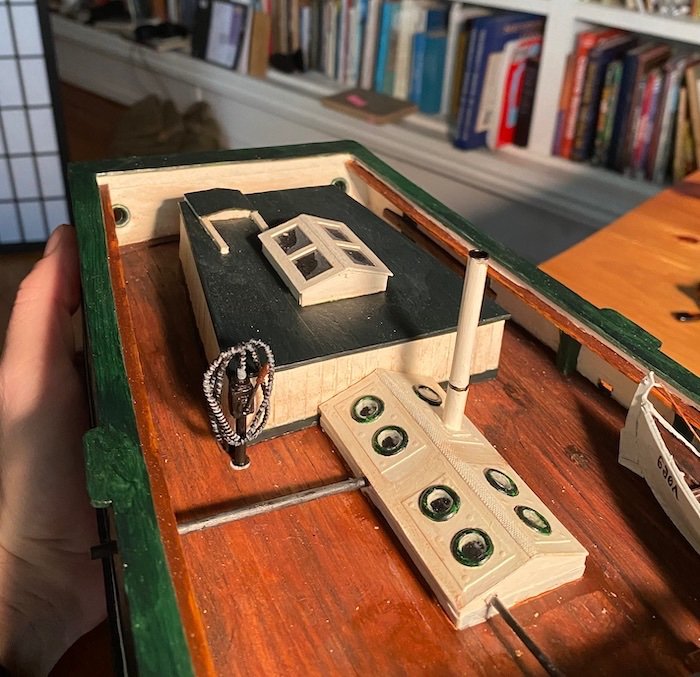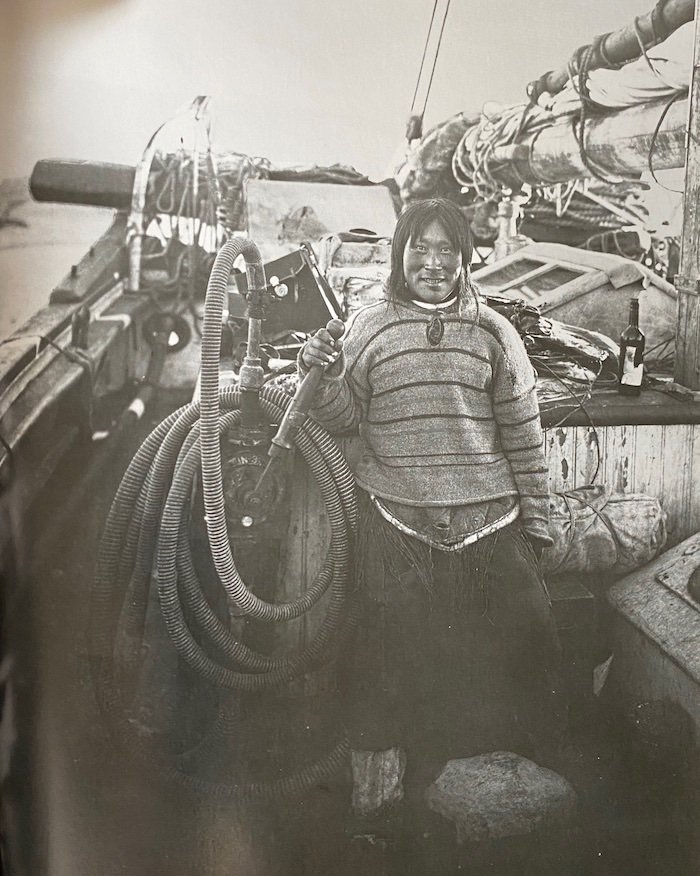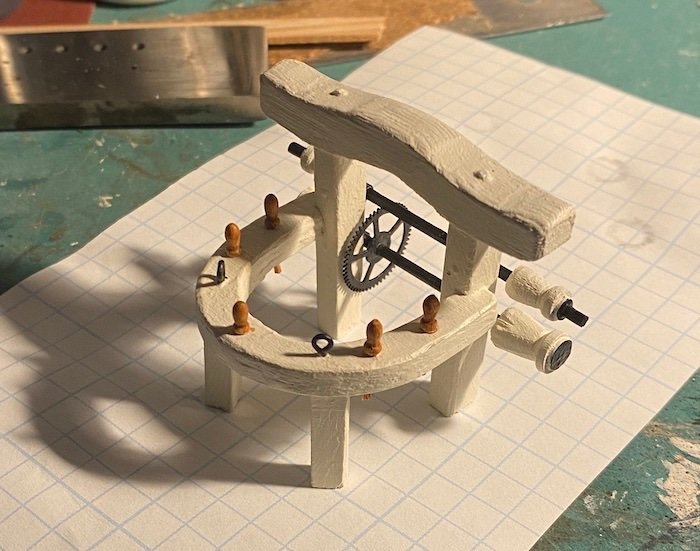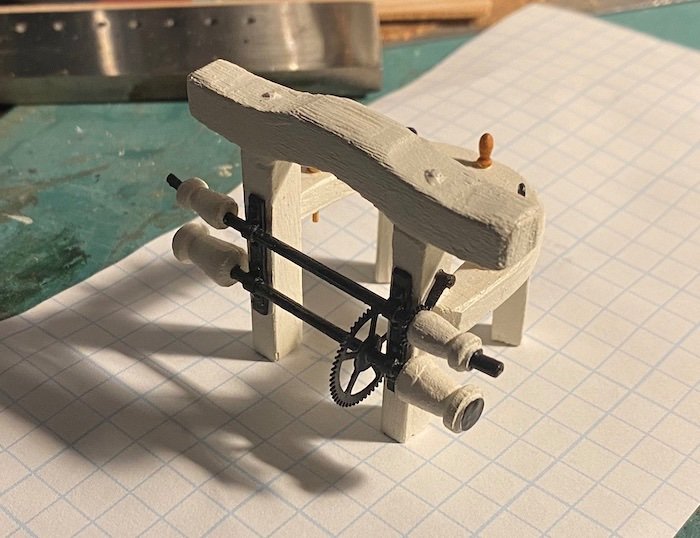-
Posts
438 -
Joined
-
Last visited
Content Type
Profiles
Forums
Gallery
Events
Everything posted by Harvey Golden
-
Perhaps of interest: https://www.bermuda.com/the-bermuda-rig/ Features quite an old engraving and some early description. The photo atop shows a schooner with two jib-headed sprit sails.
-
It could just be a naive/simplified rendering of a Barbados Schooner, as described by Morris in his "The Fore and Aft Rig in America." Without any context (date, location, surrounding details), the image could well be interpreted as having any number of rigs, e.g., gunter, lateen, jib-headed sprit, etc.
-
Thank you Phil-- I hadn't heard of this book before. Phillips-Birt's "Fore and Aft Sailing Craft" (1962) and Morris's "The Fore and Aft Rig in America" (1974) also cover origins/history of these types.
-
Just a touch early for a sharpie, which it otherwise resembles considerably.
-
Second passenger deck is on, minus the curved back wall. Starting to get the moldings on as well, such as the strake between the machinery room and the lower passenger deck floor. Much more of this is needed, along with deck railings. The wheel is en-route from Bluejacket, so will put the roof on soon; it'll have a skylight of sorts-- covered on top, with glass sides (not sure the proper term for this type of light....). The bonfire/headlight will be a bit of a challenge-- a lot of wires and three sizable bulbs to deal with.
- 40 replies
-
- Okahumkee
- sternwheeler
-
(and 1 more)
Tagged with:
-
Progress and corrections.... I had to tear out the front wall of the lower passenger deck, as I had built it wrong. The plans were a little vague, but historical images showed that it bumped-out a bit and had doorways on the angled sides. There is a chance it is still incorrect, as it seems this steamer was modified quite a bit over the years, and the time frame for its various forms isn't too well documented. I'm building for circa 1900-ish, and the drawings are from the mid-to-late 1930s-- made from the vessel. Here's the floor plan, courtesy of State Library and Archives Florida: The re-done front wall: The curved stern is finishing out nicely, made from card stock, and vertically-oriented planking made from paper: This deck is nearly completed; just realized I need side-walls on the stairway, so as to not afford a view of the lavatories(!) Fun building a stairway that no one will ever see... (I hope I don't complain too much-- this is such a fun project!) Getting the second passenger deck layout together, with a bit of the wheelhouse pre-installed: There will be two lights on the lower passenger deck: one in the lounge, and one in the hallway. I'll bend the lights' wires up above the tops of the walls, dab clear glue on them, and when the ceiling/upper deck is glued down, they'll attach to the ceiling.
- 40 replies
-
- Okahumkee
- sternwheeler
-
(and 1 more)
Tagged with:
-
Recent progress: The lower passenger deck with berths and lounge is coming together. Many pitfalls in scratch-building, in terms of what step is next; It's easy to paint yourself into a corner, and the added complication of lighting doesn't help. The elliptical stern will be a challenge-- I did decide to get the walls in first, so as to serve as molds for the curved sides, which lean inward slightly-- no doubt they'll need shimming here and there. Below shows the berths coming together, and the stairway aft tot he second floor, which rides up the wheel housing. Also not the switch for the lighting, which will be activated by pressing down the smokestack; it is heavily re-enforced beneath the switch (i.e., the ceiling of the machinery room), as most of these upper works are just paper. Sides are on, with an initial fitting/bending of the curved stern. The joint lined up with a window of course . . . fun times! The windows are just plastic from packaging, with etched pane-frames lined with ink. The outer frames are wood-- they are too thick, and will be sanded down for much lower profile.
- 40 replies
-
- Okahumkee
- sternwheeler
-
(and 1 more)
Tagged with:
-
Starting to build up the lower passenger deck: Yes, those are wires. A historic postcard (ca. 1911) shows the "Hiawatha" rounding a bend with a bonfire (serving as a headlight) on top of the pilot house. The vivid description on the verso made me want to render this as a diorama. Below is a test-run of wiring/lighting, including a 3-bulb flickering flame, sourced from Evan Designs LED (An MSW sponsor). Also using four white lights and P & S running lights. The steamer's smokestack will serve as the on-off button. . . nothing like making a complicated model even more complicateder. Here's the historical image and description.... Looks like a lot of cypress and palms to make as well. Who could resist a diorama after reading that?
- 40 replies
-
- Okahumkee
- sternwheeler
-
(and 1 more)
Tagged with:
-
For some reason my photos are coming out extremely yellow-- its definitely more like the Smithsonian model in real life.
- 40 replies
-
- Okahumkee
- sternwheeler
-
(and 1 more)
Tagged with:
-
Ready to cover the engine room, galley, and crew quarters. I spent a lot of time splitting firewood, so please don't tell me I need to stack it neatly too. Most of this will not be visible, but I can't help myself with certain details. Some details of the bow and stern, with tentative lettering: The color scheme was a big mystery; vintage hand-colored postcards show the yellow, but a model of the Ocklawaha in a regional museum is dark green instead of yellow. The breakthrough came when I found a Hart Line steamer model (the "Ocklawaha") in the US Postal Museum/Smithsonian's on-line catalog: https://postalmuseum.si.edu/object/npm_0.052985.271 It's a beautiful model, and there are many very good photos of it; it also answered a few questions the plans had left me with.
- 40 replies
-
- Okahumkee
- sternwheeler
-
(and 1 more)
Tagged with:
-
Indeed! I have a friend who kayaks on the Ocklawaha, and he was surprised to hear 80' steamers used to ply it. Historical texts describe passengers being raked by limbs, and some steamers were sunk by snags.
- 40 replies
-
- Okahumkee
- sternwheeler
-
(and 1 more)
Tagged with:
-
The machinery/engine room is coming together. The plans were a little vague in some aspects, but mostly the issue was I have no understanding at all about steam engines; was a good excuse to brush up a bit on these! I carved the capstan from a dowel end; not sure how functional the capstan would have been, as it was closed in by stairways on each side. The sides of this room are paperboard with individually laid strips of paper for planking. Bottom is cross-planked with strips of wood. The recessed wheel casing was a challenge-- both inside and out. The reason for the inboard wheel was to keep the paddles from snagging in the shallow narrow rivers these steamers were used on-- particularly the Ocklawaha River. The cover of Edward Mueller's book (1990) shows the "Osceola" on that river: The "Okahumkee" was built like the "Osceola" on the cover above, but a second full deck of cabins were added in the 1890s; my model will be the 'two-story' version. Historic photos show many modifications over the years-- even the name "Okahumkee" was spelled differently on some incarnations (as in the historic photo in the previous post).
- 40 replies
-
- Okahumkee
- sternwheeler
-
(and 1 more)
Tagged with:
-
I'm taking a break from my other build-log (Gjøa)-- a little diversion in smaller scale, of a unique craft that caught my eye recently. I first saw this type of vessel in the Historic American Merchant Marine Survey publication of ca. 1984; scale drawings of the "Okahumkee" and its later counterpart the "Hiawatha" are in the Survey. I was interested in building one the moment I saw them. The State Library and Archives of Florida has the HAMMS drawings (3 Pages, retitled) on their web-page (public domain): https://www.floridamemory.com/items/show/337722 Here is the inboard section, which also will show the Inboard wheel: Yes, a little odd looking; Historical descriptions tend to agree. Here's a postcard showing sister-ship (of sorts) "Hiawatha": In beginning, I used paper board to make the hull. While 82' long, this steamer is essentially a huge skiff, with only slight dead rise aft of the wheel slot. This paper hull will get a veneer planking. Getting ready to cross-plank the bottom: Below: The hull planked bottom, sides and top. The wheel casing is positioned, with the wheel behind it. An inboard sternwheeler is perfect for any builder dreading making the wheel . . . . but I made it anyways, albeit poorly. Will leave with another historic image (Public Domain, courtesy of State of Florida Library and Archives):
- 40 replies
-
- Okahumkee
- sternwheeler
-
(and 1 more)
Tagged with:
-
If I could squeak one in before closing.... The Hart Line "Okahumkee"-- an inboard sternwheeler that plied the Ocklawaha River from the 1870s into the 1920s. This steamer, and its later-built sister-ship "Hiawatha" are both documented in the Historic American Merchant Marine Survey, and many fine historical photos of each exist. This links to many photos of the Okahumkee, and on one of the three pages there are pages from the HAMMS Survey: https://www.floridamemory.com/find?keywords=Okahumkee (The "Hiawatha" [and other steamers] is also on this web-page). Here are two Plates from the Florida Memory (State Archives and Library of Florida) page, (Public Domain): ...And a couple postcards of the similar "Hiawatha" from my collection: Lastly: Here's a model from the 1890s of another Hart Line Steamer in the US Postal Museum: https://postalmuseum.si.edu/object/npm_0.052985.271 (Full disclosure: I am currently building a model of the "Okahumkee"). All the best, Harvey
-
Here's the pump machinery underway, with the pump logs stepped with iron pivot bracket mounted (and corrected gearing on the winch). Thanks again for the photos Steve and Eberhart-- these have been a tremendous help. (Looks like the photos that came with the kit were made during the WPA-HAMMS survey of '36-'37...) -H
-
Dear Steve and Wefalck-- thank you both so much for the images and analysis of the Gjøa's machinery. These images are exactly what I was hoping for-- they answer a million questions. Looks like I missed the two smaller gears on the midship winch-- shouldn't be too hard to remedy. Attached is the pump as shown in the historic image above. Also shown: the exhaust pipe for the Dan motor (gray).
-
Can anyone identify this bit of machinery on the Gjøa? The image is from Roald Amundsen's Diaries, as issued by the Fram Museum, Oslo in 2017 (page 485). It was taken at King William Island (the middle of his NW passage transit)-- note the hose running through the stern hawse pipe; perhaps for loading water? Thank you!
-
I'll keep searching for old images-- I suppose at some point one must decide whether to put in the likely apparatus or leave unknowns omitted. Too bad she's now stripped down so much in terms of deck machinery-- It does make sense as she's now cleared for visitors. It looks like the aft winch has been moved back, and the galley has been re-positioned aft on the hatch to make it more accessible.
-
The mast's pinrail is completed, along with some of the attached machinery. The winch heads are hand-carved from dowel ends-- no lathe in my shop. Quite a few other little things to do before stepping the mast, but it's just around the corner. Next I'll tackle the pumps as best I can from limited information-- seems to be dearth of info as to how exactly they were set up; I don't even know what the big gear on the pinrail does or what it connects to, but photos show its presence.
-
Looks correctly (and quite perfectly!) built to my eyes. The WoodenBoat book series title "10 Wooden Boats you can Build" features this design (1995). The chine logs likely allowed for thinner planking and lighter framing; adapted to plywood (as in the book) would allow for a very light and easy to build boat (stitch and glue construction would preclude needing the chines, but would require more framing and/or thicker planking).
About us
Modelshipworld - Advancing Ship Modeling through Research
SSL Secured
Your security is important for us so this Website is SSL-Secured
NRG Mailing Address
Nautical Research Guild
237 South Lincoln Street
Westmont IL, 60559-1917
Model Ship World ® and the MSW logo are Registered Trademarks, and belong to the Nautical Research Guild (United States Patent and Trademark Office: No. 6,929,264 & No. 6,929,274, registered Dec. 20, 2022)
Helpful Links
About the NRG
If you enjoy building ship models that are historically accurate as well as beautiful, then The Nautical Research Guild (NRG) is just right for you.
The Guild is a non-profit educational organization whose mission is to “Advance Ship Modeling Through Research”. We provide support to our members in their efforts to raise the quality of their model ships.
The Nautical Research Guild has published our world-renowned quarterly magazine, The Nautical Research Journal, since 1955. The pages of the Journal are full of articles by accomplished ship modelers who show you how they create those exquisite details on their models, and by maritime historians who show you the correct details to build. The Journal is available in both print and digital editions. Go to the NRG web site (www.thenrg.org) to download a complimentary digital copy of the Journal. The NRG also publishes plan sets, books and compilations of back issues of the Journal and the former Ships in Scale and Model Ship Builder magazines.



